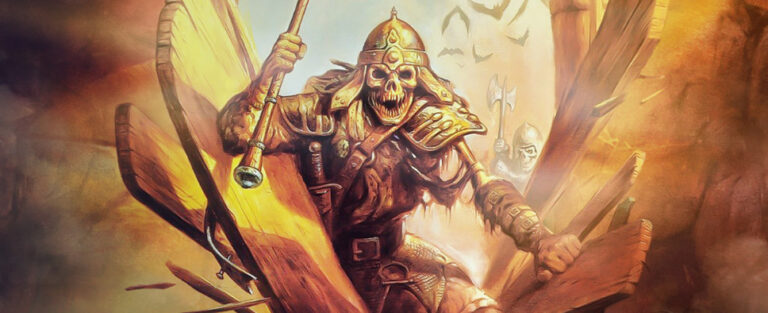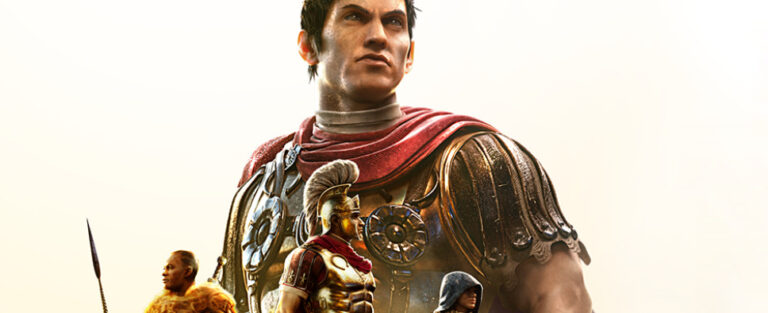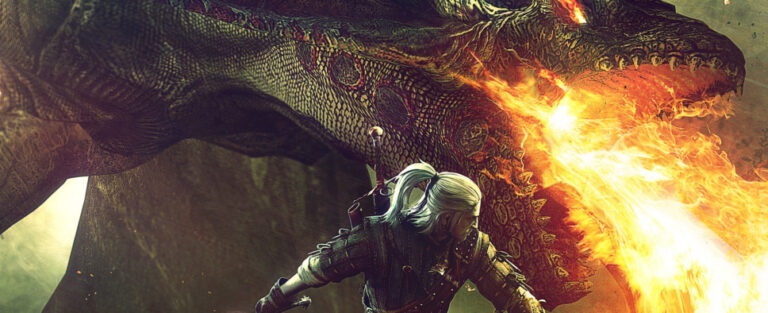Even though it was rife with issues upon its original release back in 2005, there was something about its staggering number of character advancement options, fast-paced yet satisfying combat, and entertaining co-op support that made Dungeon Lords a much more fulfilling experience than the sum of its parts might have suggested. And it’s a combination of all these elements that led DreamCatcher and RPG design veteran D.W. Bradley to repackage the game with a content-expanding v1.5 patch into a revised “Collector’s Edition” the following year.
Fast forward several years, a Dungeon Lords: Orb and the Oracle cancellation, and an acquisition of DreamCatcher’s assets by Nordic Games later, and Dungeon Lords is seeing yet another repackaging albeit with a much greater retooling as Dungeon Lords MMXII. Its quiet release on Green Man Gaming yesterday took us almost completely by surprise, but luckily we were able to chat directly with the man behind it, D.W. Bradley, to find out what exactly this third iteration has in store for us. Here is the first part of our Q&A:
GB: The Dungeon Lords Collector’s Edition released back in 2006 was already considered an enhanced version of the game, having featured the latest v1.5 patch and the addition of new items and quests. Why did you feel that the game needed another retooling, and why did you wait so many years to do so?
D.W. Bradley: It was a bit of serendipity. Two weeks before Nordic contacted me at the end of 2011 to inquire if Dungeon Lords might be available for republication, I had opened the project for the first time in years on a whim to experiment with some ideas I had. Dungeon Lords was developed at a time when UI (user interface) and avatar control conventions for real-time 3D RPG gaming were still evolving, but I realized the basic control system was right on target with contemporary methods used many of today’s popular games, so I was curious whether a little tinkering might transform and significantly improve the game experience in DL similarly. It did. When Nordic then called from out of the blue a few weeks later to inquire about republishing, they were equally excited by the new changes I had been making, and we were soon discussing plans for DL MMXII as a newly re-mastered version of the game. The timing seemed too much of a coincidence, as if it were meant to be…
GB: What are your primary goals for Dungeon Lords MMXII, exactly? Were you never quite satisfied with the original game, even with the changes introduced in the v1.5 patch? Or is this release primarily about getting the franchise in front of people again and introducing the game to a whole new audience?
D.W. Bradley: Dungeon Lords was designed as a real-time 3D multiplayer RPG at a time when the tools and techniques for developing this kind of game were still evolving. Our budget for the entire game was less than some well-known companies were spending on development every few weeks, and content creation was consuming every dollar. Refinement of UI and effective control mechanics for real-time 3D gaming required a lot of experimentation and graphic revisions costing time and money, and while the UI and player/camera controls I had developed for the original game were in the right direction, I didn’t feel they provided the immersive experience I had envisioned that makes real-time 3D gaming so much fun to play. And this has haunted me ever since the original game was published. So when I finally had a little time to experiment at the end of last year, I decided to have some fun and see what I could do.
The transformation for the new DL MMXII interface and control system was really a combination of changes over a period of several weeks, but I started by expanding the hot-key spell menu into a permanent action bar to be used for casting spells and abilities, which eliminated the need to “ready” spells and cast by clicking, which in turn allowed the mouse buttons to remain dedicated to weapon attacks and shield blocking at all times. Now players had complete control to fight and block and cast various magic spells in real-time with perfect ease, and accomplishing this had been my primary goal. Then I realized with the spell action bar now a permanent part of the display, adding support for point & click spell casting and menu buttons would be simple, so a few changes later, boom, suddenly I’m playing Dungeon Lords as if it were World of Warcraft or Rift and having a good time, and I wondered if other people might enjoy playing Dungeon Lords this way, and then Nordic called and here we are.
The final result is that DL MMXII supports both an enhanced original control mode, and the new point & click mode, and players can instantly toggle between these modes at any time however they choose. The primary difference is that with enhanced original mode moving the mouse rotates the avatar and camera view automatically and you use hot-keys to cast the spells, and in point & click mode moving the mouse moves the pointer around for clicking on spells and buttons (like World of Warcraft and Rift) and you hold down the right button to rotate the avatar and camera view with the mouse. The left button attacks with your weapon (unless you are clicking on a button in point & click mode), double-left-click & hold triggers a power attack (if the Hero has Lvl 5+ skill with the equipped weapon), and holding down the left button and moving the mouse rotates the camera around your Hero for full 360 viewing.
I rewrote the camera AI and hero movement and made other changes to improve the overall experience, and all of these revisions were simple and fun, but this was only the beginning, and now the real work began because there was so much more in the original game that I felt potentially needed to be re-crafted if we were going to republish it.
GB: We understand that there are new character classes – are you expanding the core class options beyond the basic four, or will all of the new additions be specialty classes? Can you give us an idea of how many you’re adding, and what new roles you felt were needed in the game?
D.W. Bradley: One of the most short-sighted RPG design flubs at the time, in Dungeon Lords and other games such as Oblivion, was having so many magic spells and only 8 hot-key slots for casting them – doh! The new action bar in DL MMXII supports 12 hot-key spells and actions, but the game has many more magic spells than this, and to make this more manageable I decided to revise the four Basic Classes and assign the four schools of Magic spells among them: Fighters auto-learn Rune Magic, Rogues auto-learn Nether Magic, Mages auto-learn Arcane Magic and can acquire Nether Magic, and Adepts auto-learn Crystal Magic and can acquire Rune Magic. Auto-learn means that the magic spells in a specific school are automatically added to your Hero’s spellbook when you Level Up. Each of the four Basic Classes also begins with a new special ability: Fighters have Charge Attack, Mages have Flash (super casting speed), Adepts have Divine Aura (absorption shield), and Rogues have Sneak.
A Hero may only cast spells in a school available to its Class, however, multi-class development remains a prime feature of Dungeon Lords, and players may quest to add a second Basic Class enabling them to acquire and cast spells of their secondary chosen Basic Class as well. The initial choice of starting Basic Class will determine the magic spells your Hero automatically learns when you Level Up, and any spells from the other Magic schools available to your Hero must be purchased from characters in the game or found in dungeons. The Tier II Classes were subsequently revised to offer advanced development based upon player’s choice of Basic Classes. Each Basic Class still has an advanced Tier II Class equivalent, but the game also has a unique advanced Tier II Class for every combination of the Basic Classes. For example a Fighter-Mage Hero may choose to quest for any two (out of three) advanced Tier II classes for Fighter and Mage: Knight (advanced Fighter), Sorcerer (advanced Mage), and BattleMage (advanced Fighter-Mage). This led to new advanced Tier II Classes for the game, including Tier II Druid (advanced Tier II Adept-Rogue) and Tier II Nightblade (advanced Tier II Rogue).
Players that complete Dojo quests may choose to quest for Tier II Dojo Classes based upon their Basic Class choices – for example, a Fighter may quest for Tier II Samurai Class, an Adept may quest for Tier II Monk class, and a Fighter-Adept may quest for either, but not both. Female Hero characters joining the Sisterhood have exclusive advanced Tier II class options also based upon Basic Class choices, including the new Tier II Bladewitch Class. The advanced Tier II classes generally offer one or more additional skills to augment the hero’s development in accordance with the Basic Class choices.
At the highest level, there is a corresponding elite Tier III class for every advanced Tier II class, and this led to new Tier III Classes for the game, such as Tier III Illusionist and Tier III Necromancer. Each Tier III class has an exclusive elite Skill that may be developed to provide exceptional ability, and it makes me laugh when I think how insanely powerful some of these new abilities are, the Ninjalord with Cripple skill that can bleed, fear, blind, stun, hobble, maim and kill enemies, the Dragonmaster with Whirlwind skill granting super speed movement and attacks, War Witch’s Seduction skill that stupefies an enemy and compels other monsters to attack it, and Cabalist’s Twisted Master skill which takes control of the enemy and compels them to attack the other monsters. Each Hero may only quest for one Tier III class, but Dungeon Lords MMXII now supports unlimited savegames and players may start new games and develop as many different Hero characters as they wish.
What new spells have you added to the game, and what changes are you making to the magic system as a whole?
D.W. Bradley: The most significant change was to make all magic spells share a common Mana pool, providing players much greater freedom of choice for casting magic spells during combat. Mana is directly influenced by the Hero’s Intellect attribute, allowing players to decide whether to improve attributes for better Magic or Melee capabilities when they Level Up. Nether spells are no longer mixed with Nether Katals, instead, each Nether spell requires one specific associated Nether Katal to cast in addition to its Mana cost, but the Katals are consumed much more slowly, allowing Nether spells to be cast more than once with a single Katal (Alchemy skill makes Katals last longer). Rune spells were also revised to use Mana, and Runestones have been removed from the game. Casting times and cooldowns are now displayed for the spells when cast, and this visual feedback makes use of magic much easier and intuitive during battles.
The decision to assign the different schools of Magic according to the Basic Classes necessitated that all of the Magic Spells be revisited and rebalanced, and new spells were added to supplement the Basic Class associated with that Magic school, for example the new Rune Blast spell for Fighters, Bloodstrike (a healing strike) for Rogues, Frost Missile for Mages, and Shadowstrike for Adepts. A number of the original spells were also revised, for example Rune Speed now increases fighting and movement speed, granting Fighters and Adepts ability to run faster in the game for a limited time. The Warding spells moved from Rune Magic to Crystal Magic, however, the Boon spells affecting a multiplayer group remain as Rune spells, allowing Fighters to pump up and inspire the party for improved Melee combat.
The changes to the Magic system and spells represented a major undertaking for DL MMXXII, but I felt they were necessary to provide greater distinction between the different Classes, and I wanted the player’s choice of Classes to result in very different gameplay experiences with regard to combat tactics and survival strategies.
Check back soon for part two!







